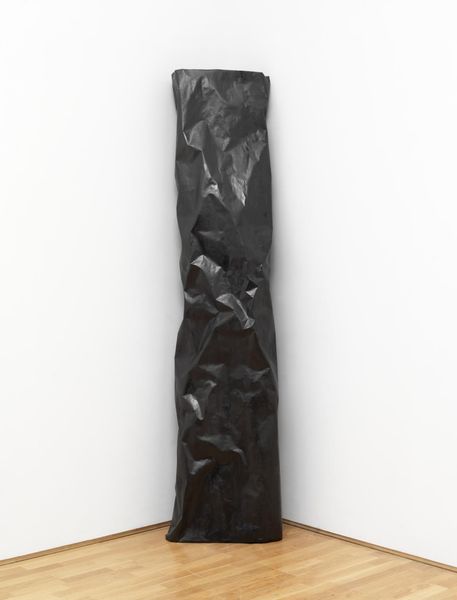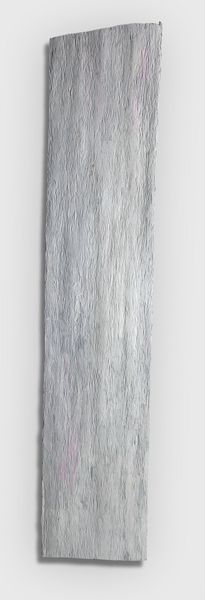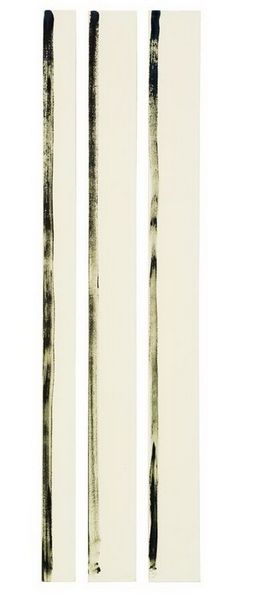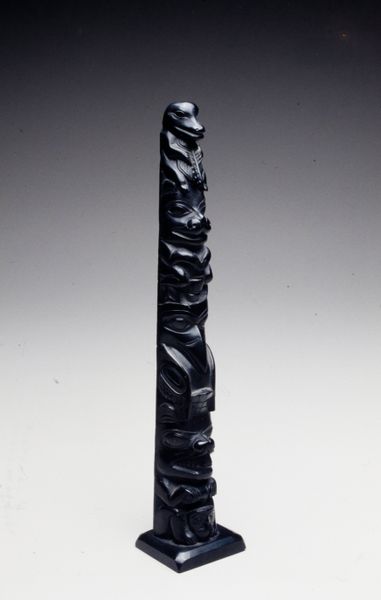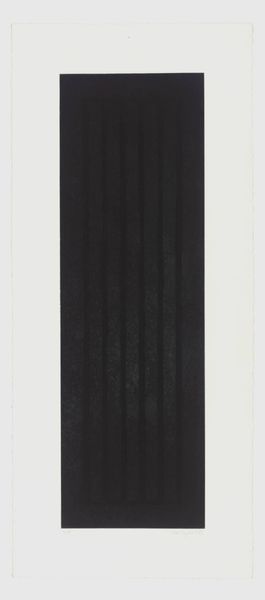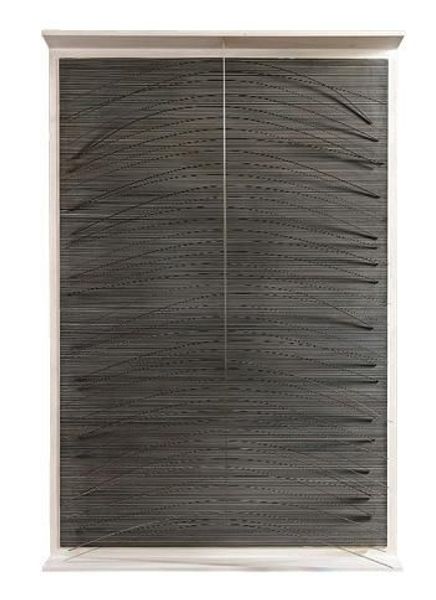
fibre-art, weaving, textile
#
fibre-art
#
fashion mockup
#
asian-art
#
weaving
#
product fashion photography
#
textile
#
clothing promotion photography
#
product design photgrpaphy
#
clothing photography
#
clothing theme
#
product mock up
#
clothing photo
#
design mock up
#
clothing design
Dimensions: 31 1/4 x 6 1/2 in. (79.38 x 16.5 cm)
Copyright: Public Domain
Editor: So, this is "Daily Yoke," a 19th-20th century textile piece made of cotton and fiber art. It's attributed to the Hsuxi Miao people. There's a strong vertical emphasis, with bands of intricate patterns and a darker section in the middle. I'm curious, what strikes you most when you look at it? Curator: It’s fascinating to consider this object within the context of cultural preservation and resistance. How do we understand "Daily Yoke" as more than just an aesthetic object? What stories does this textile hold about the Miao people’s lived experiences, their traditions, and perhaps, their challenges? Editor: Well, I see the title "Daily Yoke," and I wonder if it's referring to a burden, or daily labor... given it's a piece of clothing, perhaps how clothing represents identity or status within the culture. Curator: Exactly! And consider the period it was created in – the 19th and 20th centuries were marked by significant social and political upheaval, particularly for many indigenous communities. Is it possible to read this "yoke" not just as daily labor, but also as a symbol of the weight of cultural expectations, assimilation pressures, or even resistance against external forces? How does the act of creating and wearing such a piece become a form of agency? Editor: I didn’t think about it that way. The detail feels really intentional now; a deliberate act of asserting identity. Do you think the motifs used have a specific meaning connected to resistance? Curator: Absolutely. While the exact meaning may require deeper ethnographic research, we can appreciate the artistic choices, such as the repeated geometric patterns and the careful use of color, as intentional acts. Perhaps they encode specific clan histories, spiritual beliefs, or even coded messages of solidarity. Can we look at this piece as a testament to the power of material culture to communicate resistance and cultural survival? Editor: I see the work with totally different eyes now. I was only considering aesthetic features, rather than it being an active expression of cultural endurance and coded communication. Thanks! Curator: My pleasure. Considering the political implications of cultural production is an important step in understanding the multilayered significance of artworks like this one.
Comments
No comments
Be the first to comment and join the conversation on the ultimate creative platform.

